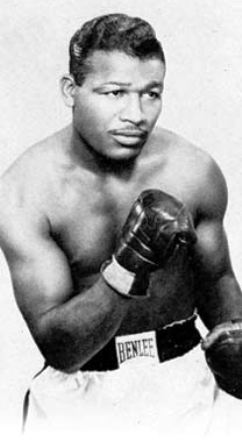The sport of boxing, since its existence going back to the late 1800’s, has always possessed weight classes, determined on the mass of the fighters competing. These limits are set in place to ensure that there are no massive size differences between two fighters in a bout (for example, a 130 lb. fighter facing a 200 lb. fighter). Originally, there were 8 weight classes: flyweight (any fighter lighter than 112lbs), bantamweight (112lbs to 118lbs), featherweight (118lbs to 126lbs), lightweight (126lbs to 135lbs), welterweight (135lbs to 147lbs), middleweight (147lbslbs to 160lbs) light-heavyweight (160lbs to 175lbs) and then heavyweight, any fighter above the weight of 175 pounds.
These weight classes are barring, and it means that unfortunately, we don’t often get to see different-sized fighters clash in the ring because of the obvious size imbalance. But what if we could shrink (or size up) every boxer in history to one size, and then compare them? There would be no size indifference, and the fundamental styles, speed, and power of each fighter would not be diluted.
This thought experiment, arising out of the 1920s, was the idea of a “Pound for Pound” ranking in boxing. Obviously, a current heavyweight champion would destroy a tiny 120-pound featherweight, but what if the two would be the same size? With the bigger man’s size gone, would his skills be proven to be inferior to his now-equal opponent?
In this article, I’ll be going through, in my opinion, boxing’s Top Ten Pound for Pound rankings – the top ten best fighters in the history of the sport.
#10: Henry Armstrong

The 5’5″ part Irish, Cherokee, and African American Henry Armstrong didn’t have a particularly flashy start to boxing – he failed to qualify for the 1932 US Olympic Trials and lost his first two pro fights – but this scrappy lightweight battled his way to the top, jumping weight classes constantly in this more archaic era of boxing.
The brawler earned his nickname “Homicide Hank” from his incessant pressure fighting style. In boxing, pressure fighters seek to crowd out and overwhelm their adversaries through sheer volume of punching. The closer to their opponent they are, the better.
Armstrong won the lightweight title in 1938 – famously swallowing cups of his own blood that had coagulated in his mouth to hide his injuries and incur a stoppage – and would also seize the featherweight and even welterweight divisions. By achieving these spectacular feats of pugilism, he would become the first-ever champion across three separate weight divisions – setting the precedent for many of the other fighters on this list.
Armstrong would die in 1988 from cardiac arrest. As an ESPN special on Homicide Hank remarked, “After his death, his heart was found to be one-third larger than average. That didn’t surprise anybody.”
“After his death, his heart was found to be one-third larger than average. That didn’t surprise anybody.”
Overall, Armstrong’s rough infighting, savage determination, and overwhelming power make him a top 10 on my list.
#9: Jack Dempsey
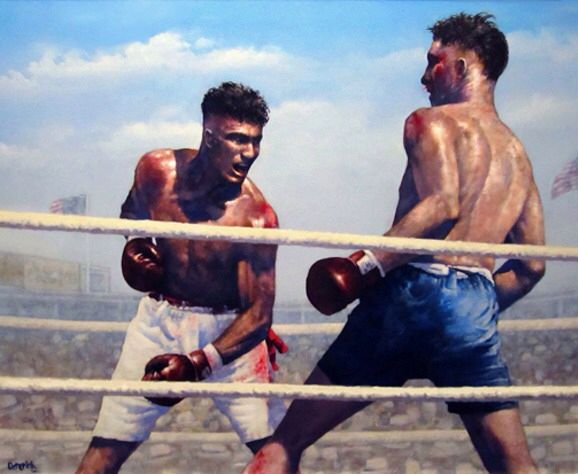
Like our last entry, Jack Dempsey didn’t have a particularly easy start to boxing. Growing up fighting in hobo camps, riding the rails, and fighting in western saloons to earn “a handful of dollars to eat,” Dempsey learned how to be mean – fast. This necessity of being a brutal and unsympathetic fighter molded into Dempsey’s swarmer style of boxing.
Combining excellent hand and foot speed with revolutionary punching techniques, Dempsey exploded into the heavyweight division – leaving a trail of mangled bodies behind him. The man who boxing commentators dubbed “the Manassa Mauler” changed boxing from a gentleman’s sport, of pondering and slow-moving boxers, to a rough-and-tumble style of fighting. When Dempsey fought, it may as well have been a fireworks display, obliterating those who stood in his way.
“[Dempsey] should’ve been the only heavyweight anybody ever thought of when they thought about the greatest heavyweight champion.”
But it wasn’t just power – Dempsey possessed excellent footwork, technique, and boxing fundamentals. “[Dempsey] should’ve been the only heavyweight anybody ever thought of when they thought about the greatest heavyweight champion,” stated Ray Arcel, legendary boxing trainer, “I mean he had everything. He could punch, he could box. He was mean and determined.”
The consummation of Dempsey’s truly awesome power came when he faced the goliath Jess Willard, who at 6’6” and 245 pounds eclipsed Dempsey. Yet the quicker, more technically skilled Manassa Mauler shellacked Willard in three rounds, not only winning the championship but also ushering in a new era of boxing. When you see the fighters below on this list – the gritty brawlers, the fleet-footed dancers, the lightning-fast punchers – think of Dempsey.
#8: Benny Leonard

If Dempsey broke his opponents apart as a butcher breaks apart a carcass, then lightweight boxer Benny Leonard dismantled you as if it were a chess game. Rising out of the impoverished New York ghettos, Leonard possessed the unfortunate trait of being Jewish in an Irish neighborhood, and his neighbors never let him forget it. Bullying and harassment turned into street brawls, and Leonard came out of his youth knowing how to defend himself.
However, unlike Dempsey, Leonard came out of his rough childhood with a more cerebral boxing style. Leaning on his back foot, staying out of his opponent’s reach, Leonard would play defense, utilizing a counterpunching style early on. When he would be pressed by his opponents, Leonard would use his expert footwork to dodge or roll punches, then stay in the center of the ring. The aptly named “Ghetto Wizard” was smart enough to know that when your back is against the ropes, you are defenseless, so he avoided that error.
“Boxing is brains over brawn… leonard’s mental energy surpassed anyone else’s.”
The aforementioned trainer Ray Arcel had this to say about his young protege: “Boxing is brains over brawn. I don’t care how much ability you got, if you can’t think you’re just another bum in the park. People ask me who’s the greatest boxer I ever saw pound-for-pound. I hesitate to say, either Benny Leonard or Ray Robinson. But Leonard’s mental energy surpassed anyone else’s.”
Whilst fellow lightweight Henry Armstrong bullied his opponents against the ropes, Leonard jabbed at them with pinpoint left hands, counterpunching with deadly accuracy and speed. Cleaning the clock of the best lightweight contenders, Leonard was the world champion for nearly 8 years until 1925.
#7: Sam Langford
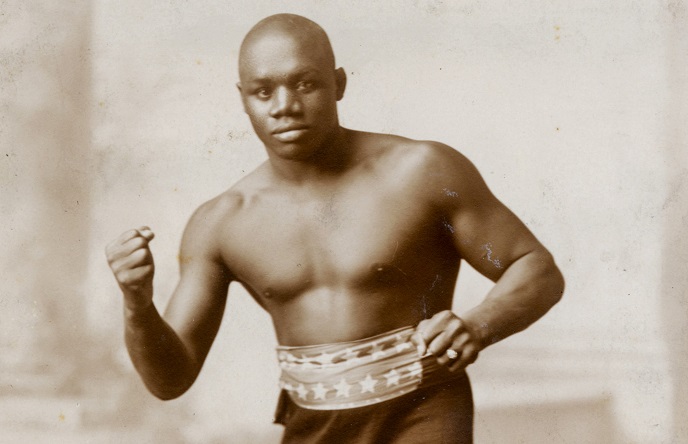
Sam Langford, as said in the words of ESPN Boxing, “is the best boxer you’ve never heard of.” As I discussed in my article on Mr. Langford, he possessed truly generational talent. The “Boston Bonecrusher” had long, muscular arms that delivered punishing blows in the ring, and was considered by many at the time to be the most devastating puncher in the early 1900s. He also employed excellent technique and footwork, opening up new avenues for attack and paving the way for his demolition jobs on opponents.
“He is the toughest little sob that ever lived.”
But what makes Langford truly unique was his willingness and courage to fight nearly any fighter in the field – when he himself was a mere 5’7 inches and 155-pound fighter. Langford truly defined “pound for pound” facing men nearly 60 pounds heavier – and annihilating them. One of his opponents had this to say about Langford: “He is the toughest little SOB that ever lived.” Avoided by white boxers because of his race, and by black boxers for fear of his power, Langford tragically never became a world champion.
His incredible record stands at 314 total fights – more than anyone on this list – with 210 wins, 43 losses, and 53 draws.
#6: Muhammad Ali

Out of all the boxers on this list, you likely know Muhammad Ali (and to a lesser extent the photo above) the best. Ali is the second – and last – heavyweight to be mentioned on this list, but he was, in his own words, “the Greatest.” Quite possibly the fastest boxer who ever lived, Ali took what Leonard had done so well and put it on steroids. Born with extraordinary speed, Ali combined that with his own lessons on footwork, combination punching, and superfluous head movement.
“[Ali] was just the greatest fighter that god ever created.”
As a result, the man was like a ghost in the ring. “It’s one thing to see him on the films and plan how you’re going to fight him,” George Chuvalo wrote, “but it’s another thing to be in the ring and see just how fast he is. I couldn’t catch him!” Mike Tyson said this about Ali:
“He is the greatest heavyweight boxer of all time, I think. Yeah. No doubt because Ali has qualities you can’t put on a statistic scale like height and weight and reach and all that stuff. He had internal fortitude. He’s just an amazing man and Cus [D’Amato] always said you’re never going to see a guy like him again. Cus was the biggest fan of Ali. He just thought that he was the greatest fighter that God ever created.”
Ali would go on to have the best record in heavyweight boxing history, scoring wins over Joe Frazier, George Foreman, Jerry Quarry, Ken Norton, Ron Lyle, Sonny Liston, George Chuvalo, Earnie Shavers, Cleveland Williams, Ernie Terrell, and more. He fought the best of the best, and his spot as boxing’s greatest heavyweight is well-earned.
#5: Roberto Duran

“I do not fight for free, but I was born to be a fighter.” So uttered the “Hands of Stone”, Roberto Duran. Coming out of the slums of Panama City, Duran won the lightweight championship in 1972 with the help of Ray Arcel as his trainer. Duran, like Henry Armstrong, utilized spectacular infighting skills, albeit in a more strategic manner.
“I do not fight for free, but i was born to be a fighter.”
Fighting in close quarters, Duran would employ swift hands of stone to batter his opponents, whilst using his razor-sharp reflexes and timing to adjust his punches. Lee Wylie, a boxing analyst at FightCity, comments that “he was also a defensive master, brilliant at blocking and parrying punches or stepping in to smother them… it was his slippery movement that made him hard to hit cleanly.”
Duran, after a record of 12 lightweight championship title defenses, Duran moved up weight to fight as a welterweight. Duran would encounter, and brutalize, top-rated and undefeated welterweight boxer Sugar Ray Leonard. This would be the zenith of Duran’s career, as he would drop wins to other bigger fighters, but his ability to compete with the bigger men with such artful and cerebral aggression deserves praise.
#4: Ezzard Charles

Ezzard Charles, in the words of heavyweight champion of Larry Holmes, “had the misfortune of coming after the famous Joe Louis.” The latter fighter had set such shockwaves throughout the heavyweight division – with his spectacular boxing ability but also his ability – that anyone who followed in his footsteps was doomed to never be as popular as the former champion. Such a gloomy fate befell Ezzard Charles, the Cincinnati Cobra, one of the slickest and most well-rounded boxers in history.
The third fighter on this list to be trained by Ray Arcel, Charles first started out as a middleweight at around 160 pounds, but because of his race, was denied a shot at the title by then-white champion Tony Zale. So he jumped weight classes to light heavyweight, but despite beating top-rated boxers in Joey Maxim and Archie Moore, was again denied a title shot.
So Charles jumped to heavyweight, defeating Joe Louis for the title, and then had a short lived career at the 175lbs+ crowd. If you just looked at his resume – 95 wins, 25 losses – it would not seem so impressive to be on a top 10 Pound for Pound ranking. But from 1948 to 1952, Charles was truly a force to be reckoned with in the ring. His biographer, William Dettloff, had this to say:
“Ezzard Charles was a marvelous pugilist who wreaked havoc in the ring but beyond the ropes remained humble, honorable, hard-working, and all the other things you wanted your kid to be when you sent him off into the world.”
Swift as a shadow, lithe as a dancer, but cunning as a cobra, Charles was a natural boxer, but his swift combination punching and well-developed power allowed him to dismantle his opponents, piece by piece.
Out of the 10 Boxing Hall of Fame fighters that Charles faced, he beat 9 of them, only losing to the freak of nature that was Rocky Marciano. His natural athleticism allowed him to fight at three separate weight classes, and consistently beat the best of those respective groups, earning him a 4th place on this list.
#3: Willie Pep
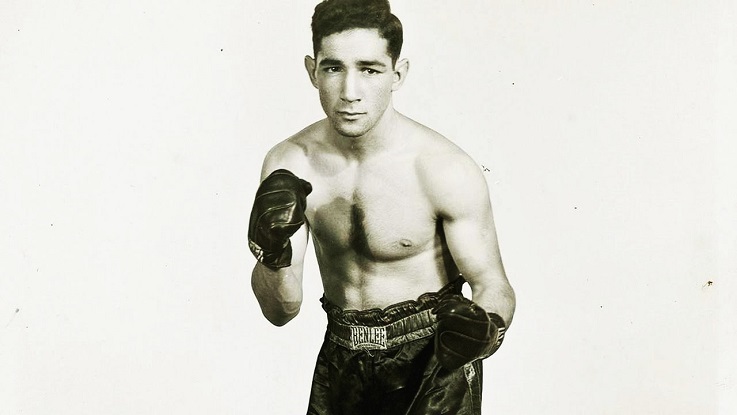
Willie Pep, aside from being the smallest fighter on this list, is also likely the most defensively gifted. Pep, nicknamed the “The Will o’the Wisp,” would employ a mix of ring intellect and dazzling footwork to sufficiently outbox his opponents. Just as Benny Leonard would, Pep would never be caught off guard, or forced against the ropes.
“They say sugar ray robinson is the best fighter, pound for pound, well i’m the best fighter, ounce for ounce.”
From 1940 to 1948 – he would win an astounding 134 times, only losing once – to a man who outweighed him by 15 pounds. Willie Pep dominated the featherweight division and often made comparisons about himself to other, bigger men. “They say Sugar Ray Robinson is the best fighter, pound for pound, well I’m the best fighter, ounce for ounce,” he quipped.
His mastery of the ring absolute, Pep would win one boxing match by not throwing a single punch for a fight in 1943 – dodging his opponent’s attacks, sidestepping punches, and mocking his beleaguered challenger. So impressed were sportswriters that they gave the round to Pep – because even if he didn’t attempt a single punch, at least he didn’t make a fool out of himself.
Such a performance was just one spectacular display out of many Pep would show off. Pep would retire in 1966, having reigned as featherweight champion from 1942 to 1948, and again from 1949 to 1950.
#2: Harry Greb
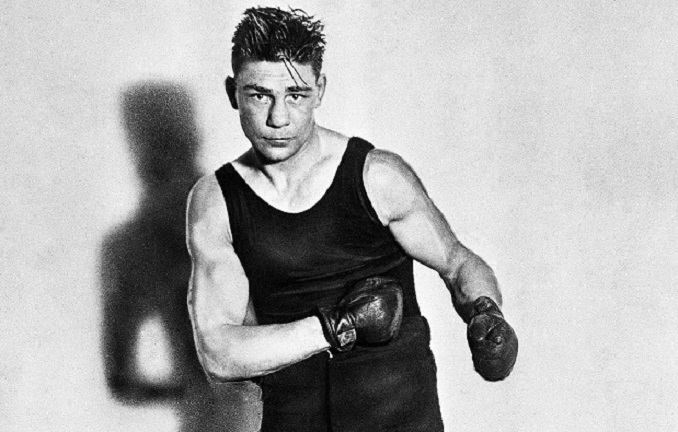
The story of Harry Greb is one of supernatural talent. Born in the industrial city of Pittsburgh, Pennslyvania, in 1894, Greb was a come-at-you fighter, a natural swarmer and volume puncher who pelted you with constant blows that overwhelmed through sheer quantity. He was not a knockout puncher, but over time the accumulation of hard blows took its toll.
A fast and furious fighter, Greb took the fight to his opponents, and he took them down. Compared to the ring genius of Benny Leonard, the swift reflexes of Roberto Duran, or the excellent timing and counterpunching of Ezzard Charles, you’d think that Greb would come up short. But in my opinion, Greb was simply so effective at smothering his opponent’s fire that they could never get started – period. And when he was caught, his world-class chin held up admirably, as Greb was never knocked out in his prime.
Greb utilized his natural speed and stamina to employ these tactics. Sam Langford commented, “The fastest fighter I ever saw in my life was Harry Greb. And they called him the Windmill for a reason, the faster he went, the more he punched, and from all over!”
“It was like fighting an octupus!”
“It was like fighting an octopus,” is how great heavyweight Gene Tunney recalled the experience. Like other greats on this list, Greb didn’t mind mixing it up with the big boys – despite being a natural middleweight, from 1918 to 1926 he fought anywhere from welterweight to heavyweight – and beat the top fighters of his age.
Greb’s energizer rabbit-esque fighting style frazzled the timing and reflexes of all his opponents. His speed made it damn near impossible to counterpunch, and by the time he got on top of you, it was over. To make this even more impressive, Greb was fighting with a physical handicap – he had been blind in one eye since 1921, yet some of his most dominant victories came in the years to follow. Greb takes the definition of “superhuman” and stretches it to the max, and his spot at #2 is well-earned.
#1: Sugar Ray Robinson
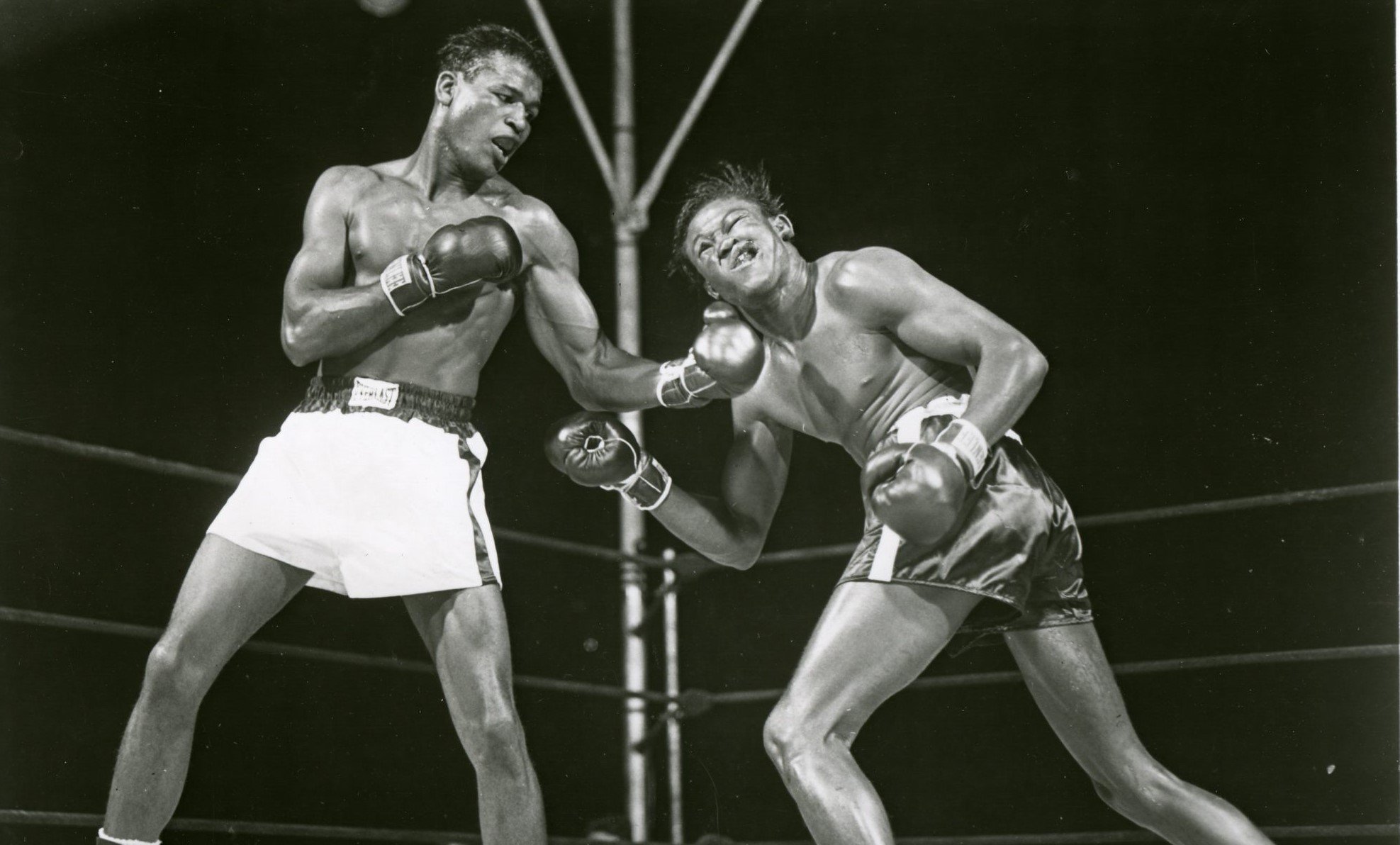
“The King, the Master, my Idol,” is how Muhammad Ali described Sugar Ray Robinson, unanimously considered by boxing writers to be the greatest pound-for-pound pugilist who ever lived. Robinson’s boxing style combined all the best elements of the fighters above. He was as quick as Ali, defensively gifted as Pep, as offensively powerful as Charles, and as unrelenting as Greb.
The key to Robinson’s success was his rhythm. As the man himself said, “Rhythm is everything in boxing. Every move you make starts with your heart, and that’s in rhythm or you’re in trouble.” Robinson’s versatility was his greatest weapon. He mastered every punch and boxing style available – he could act as a counterpuncher, a rugged brawler, or a slick dancer.
From 1943 to 1951 Robinson went on an incredible 91-win streak in the welterweight division, beating world-class fighters in Jake LaMotta, Kid Gavilan, Tommy Bell, Carl Olson, Gene Fullmer, and Carmen Basilio. His most terrifying display of punching power came during his 6th fight against Jake LaMotta, in which Robinson pummelled LaMotta to a pulp, with nearly 48 unanswered blows to the head, before the referee ended the fight.
“Robinson combined an athlete’s grace and excellent power and was nearly unbeatable in his prime.”
Even after his dominating reign, Robinson was ready for more. He jumped up to middleweight and after a short retirement, returned to win the title an astounding 5 times. Even in his late 30s, Robinson routinely gave fighters up to ten years his junior bloody defeats, or at the very least, hard-won victories. He finally retired in 1965, with a total record of 174 wins, and 19 losses – out of which 18 came after he turned 30 years old.
As the International Boxing Hall of Fame concluded: “Robinson combined an athlete’s grace and excellent power and was nearly unbeatable in his prime.” Such a man, gifted with such speed, ferocity, skill, and power, will always be the greatest of all time.
